IDEXX SDMA
SDMA case study: Mary Jane

Background information
Name: Mary Jane
Age: 3 years
Breed: Leavitt bulldog
Gender: Spayed female
Presenting reason
Mary Jane had just moved into the area and had come in for a checkup and to see how her kidney disease was doing.
History
Mary Jane was diagnosed with kidney disease by her former veterinarian when she presented for an ovariohysterectomy at 1 year of age. At the time, Mary Jane’s owners were informed that she would likely not live very long, as she was being diagnosed with kidney disease so early in her life. The owners reported that Mary Jane appeared to be a happy and healthy dog aside from her diagnosis of kidney disease and noted normal thirst and urination, without urinary accidents or the need to go out at nighttime.
Her owners heard about a new test for kidney disease in dogs and cats that they thought could give them more information to potentially help Mary Jane. They considered Mary Jane a valued member of their family, and they were saddened by the possibility that her time with them would be short because of her condition.
Physical examination
Mary Jane was bright, alert, and responsive (BAR). She had a normal temperature, pulse, and respiratory rate. She was well-hydrated and appeared well-muscled. The pet owner brought along copies of Mary Jane’s laboratory work from her former veterinarian so it could be compared to current lab work results.
Diagnostic plan
A chemistry panel including the IDEXX SDMA Test, complete urinalysis, the SNAP 4Dx Plus Test, as well as fecal antigen tests with ova and parasites testing were recommended.
Mary Jane’s CBC came back within normal limits, her SNAP 4Dx Plus Test results were all negative, and her fecal testing results were negative.
Diagnostic review
The implications of an incomplete patient workup given today’s diagnostic capabilities:
- Better information should yield better patient outcomes and more appropriate pet owner conversations. Innovations in diagnostics afford us the opportunity to more specifically identify disease conditions, investigate underlying causes and complications, and plan treatment and follow-up supportive care.
- While SDMA* and creatinine are inversely proportional to glomerular filtration rate (GFR), they vary in reliability for assessing kidney function. SDMA has not been shown to be influenced by medications, advanced age, or muscle mass like creatinine can be.
Diagnosis
Mary Jane’s kidney function was normal. Creatinine is not specific for kidney function, and it was likely increased because of Mary Jane’s muscle mass.
Patient reports
Previous laboratory results
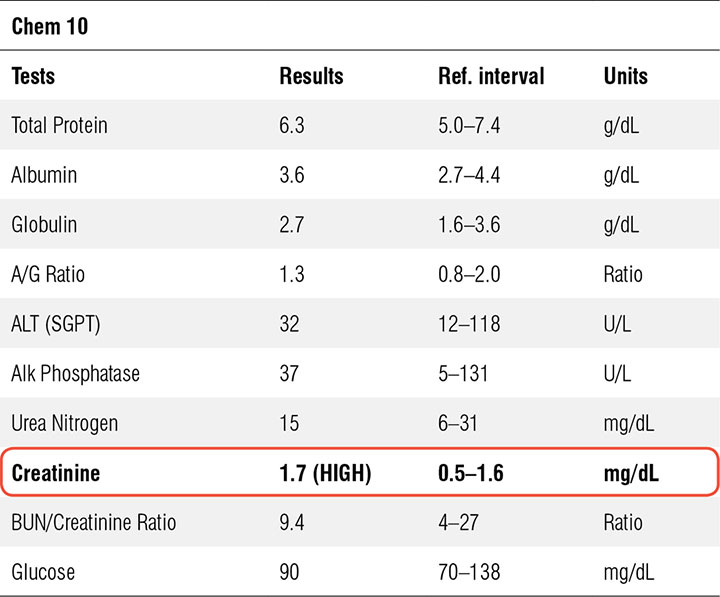
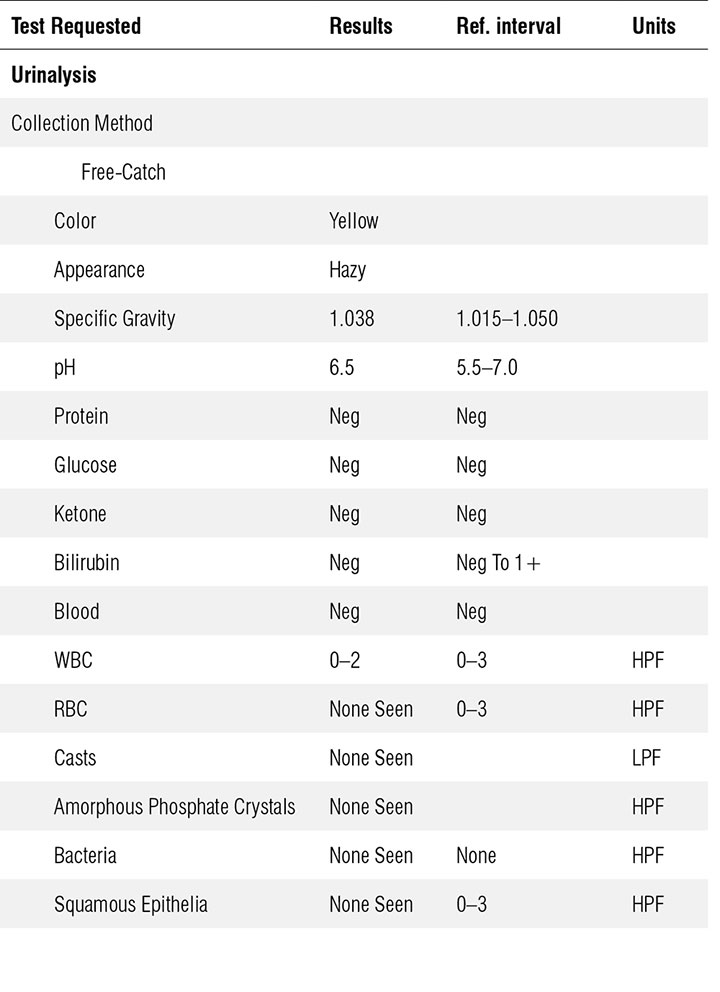
IDEXX VetConnect laboratory results
Chemistry
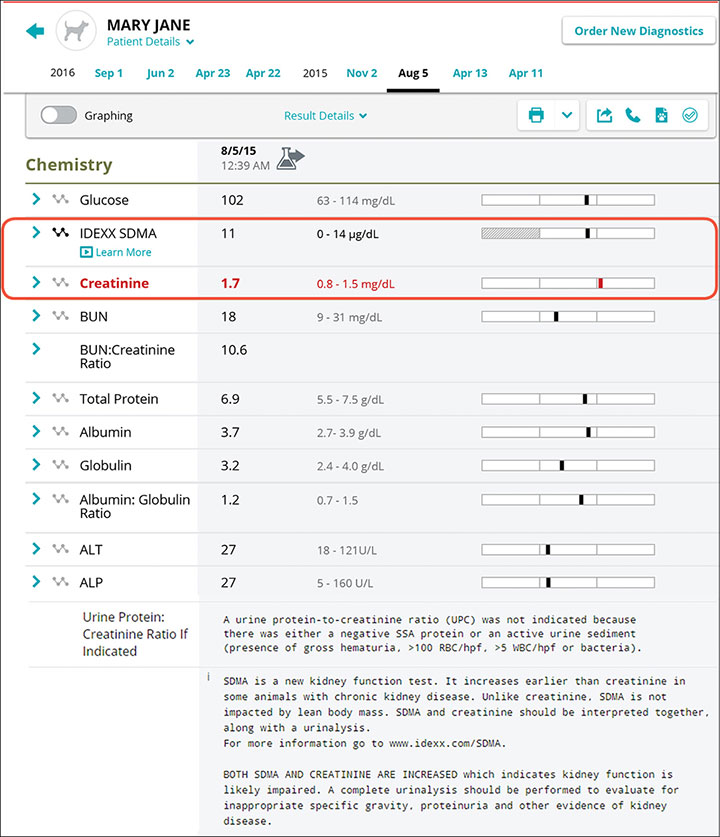
Urinalysis
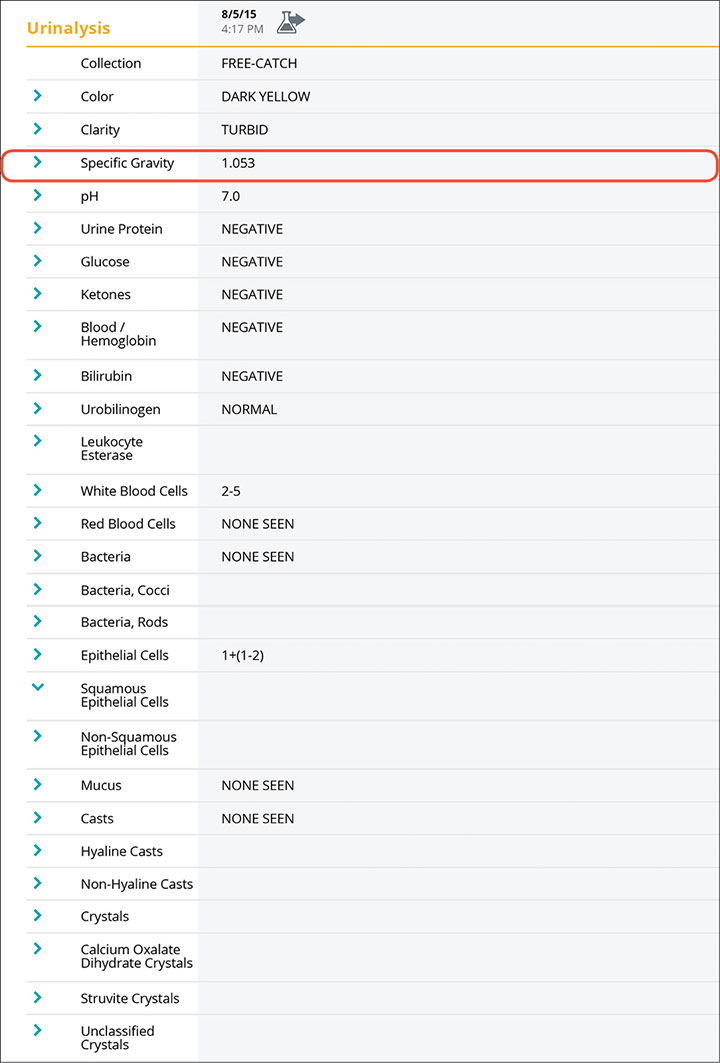
Parasitology
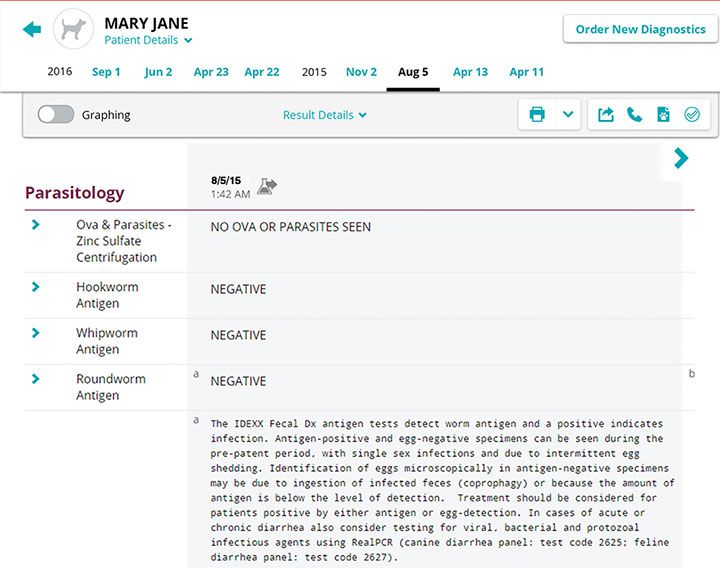
Discussion
Creatinine is a breakdown product of muscle, and as such, blood creatinine concentration is highly influenced by the muscle condition of patients.
SDMA is a more reliable indicator of kidney function than creatinine.1,2 Mary Jane’s case is an example of how a healthy pet can have a creatinine that is increased above the reference interval while other commonly evaluated kidney disease parameters (e.g., SDMA, urine specific gravity) are within normal limits. SDMA should always be assessed first alongside creatinine to more reliably determine kidney health and response to treatment.
*Symmetric dimethylarginine.
References
- Hall JA, Yerramilli M, Obare E, Yerramilli M, Yu S, Jewell DE. Comparison of serum concentrations of symmetric dimethylarginine and creatinine as kidney function biomarkers in healthy geriatric cats fed reduced protein foods enriched with fish oil, L-carnitine, and medium-chain triglycerides. Vet J. 2014;202(3):588–596.
- Hall JA, Yerramilli M, Obare E, Yerramilli M, Melendez LD, Jewell DE. Relationship between lean body mass and serum renal biomarkers in healthy dogs. J Vet Intern Med. 2015;29(3):808–814.